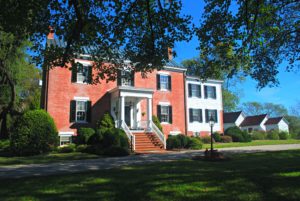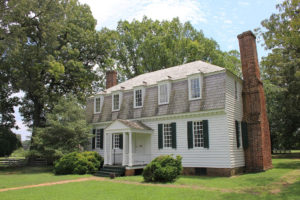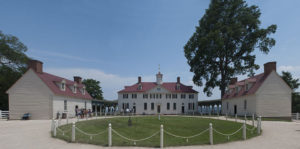The South is known for the iconic architecture of older houses, homes that have withstood the test of time. In Virginia, a broad spectrum of residential property types has been developed between the historical epochs of 1700 and 1930, offering home purchasers a wide range of choices.
If you’re considering buying a home in this lovely state, one of the things you’re probably planning to do is a historic home remodel. Historic home renovations are definitely not a small undertaking, and so this article will show you everything you need to know, including some very helpful tips, to ensure that your upcoming historic home renovation will be a success.
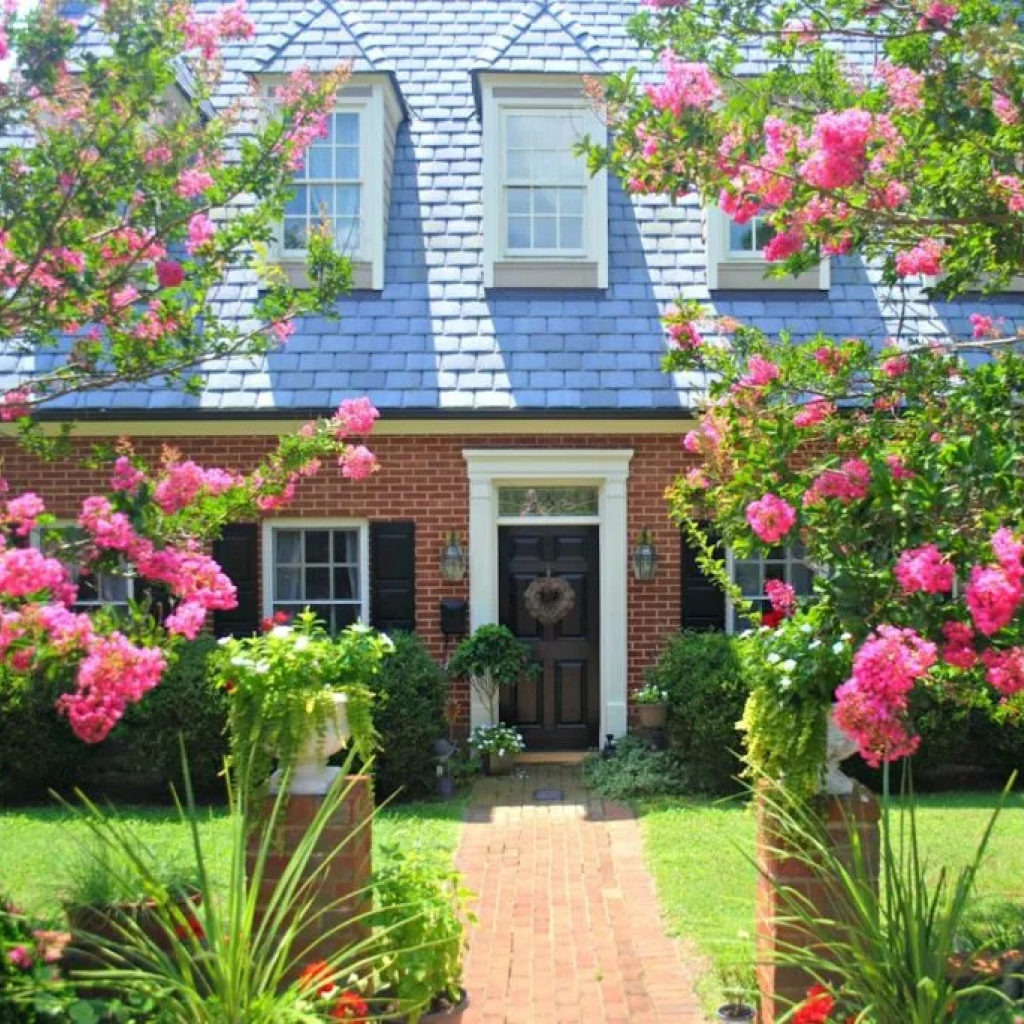
Historic Home Remodel: What to Expect
An old house interior has its charms but living in one would entail irregularities and the absence of some of the comforts of the 21st century. This is why a historic home renovation is mostly included in most home buyers’ plans.
Historic homes in Virginia also come with a lot of hidden surprises from previous renovations that you will only discover once you start really digging in. Some surprises may be bad, but there are good ones, too. During a historic home kitchen renovation, you might be pleasantly surprised to see the original wood floors that just need to be sanded and refinished after taking off the old vinyl tiles.
Given these, one of the things you need to include in your home purchase plans is the cost to renovate a historic home, as there will most probably be parts that would need repairs and some that you’d want to improve on.
How to Get the Most Out of Your Historic Home Renovation
When it comes to a historic home renovation, interiors are either restored or rehabilitated and you will have to decide which route to take. It will help to take some time to understand the history of this historic home, its architecture, as well as the present condition of its materials, finishes, and systems.
To restore a historic house means to return its interior and exterior appearance to a particular date or time period.
To rehabilitate a historic house means to make it useful and functional for contemporary living while preserving important historic and architectural features.
In deciding whether to restore or rehabilitate your home, you will have to consider your household’s lifestyle and the personal needs that the renovated house must accommodate.
Other factors to consider are:
- Local historic district designations
- Local building codes
- Property insurance
- Other regulatory or financial considerations
The major difference between restoring and rehabilitating a historic home is, restoration brings the house to exactly how it was during a particular period; while rehabilitation would bring about modern changes that offer functionality and contemporary style.
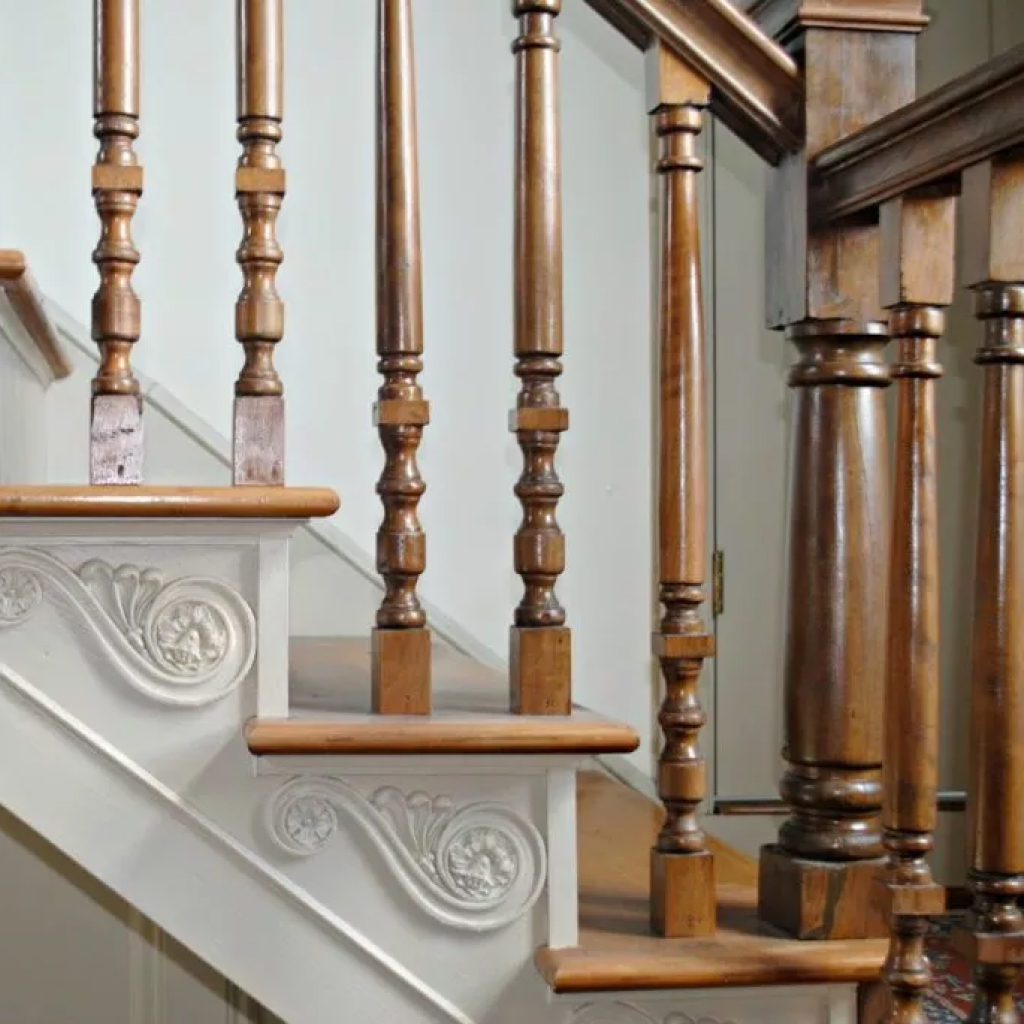
5 Tips for Historic Home Renovations
While a lot of helpful resources are readily available online, there may be too much information out there and it might be a bit overwhelming to digest all of them. Here’s a more concise list of the best tips for renovating historic homes.
Assemble a Team
Before you hire a cheap historic home renovation electrician, it is essential to research on the people with experience in historic renovation to be part of your team, such as a local historian or contractor who is experienced in renovating historic houses. They are the best people to tell you about the restoration process that needs to be done.
Repair Historic Details
Before deciding to totally replace the materials in any part of the house prior to a historic home bathroom renovation or a kitchen renovation, keep in mind that historic homes are built with durable, high-quality materials, such as cypress, heart pine, and oak.
These natural resources, which were much more abundant in the olden days, can withstand a lot of wear and tear. Worn-looking elements can be restored, and missing elements can be fabricated based on clues that are still intact.
If You Can’t Save It, Replicate It
Sometimes, the costs of restoring parts of a historic home can be incredibly high. Fortunately, replication is also an option for you. You can even have new elements distressed to match the originals.
Embrace Both Old and New
Remember that you bought a historic home – it’s yours. So, whenever you’re faced with a dilemma of whether to restore a woodwork or replace it with something contemporary that fits your style, go for the latter.
Check Everything Before Moving In
After all the repairs are done and new features are in place, make sure everything works properly before you move in. For your safety, hire an affordable historic home renovation electrician to check all electrical installations.

Financing Historic Home Renovations
Apparently, there’s a lot of work and money involved in fixing up a vintage home. Good thing there are historic home renovation grants, loans, and tax incentives for you.
Most grants for renovating historic homes are available to non-profit organizations and public properties or groups, but you may be able to find grant money on a local, state, or national level from various sources, such as philanthropic groups.
Loans for historic home renovation are also another option. The Department of Housing and Urban Development’s Section 203(k) insurance assists homebuyers in financing both the purchase or refinancing of a historic house and the cost of its renovation through a single mortgage and homeowners in financing the renovation of their existing home.
In Virginia, a historic homeowner who completes a certified rehabilitation of a significant historic building can receive an income tax credit on 25% of their eligible expenses through the Virginia Rehabilitation Tax Credit Program and an additional 20% credit through the Federal Rehabilitation Tax Credit Program.
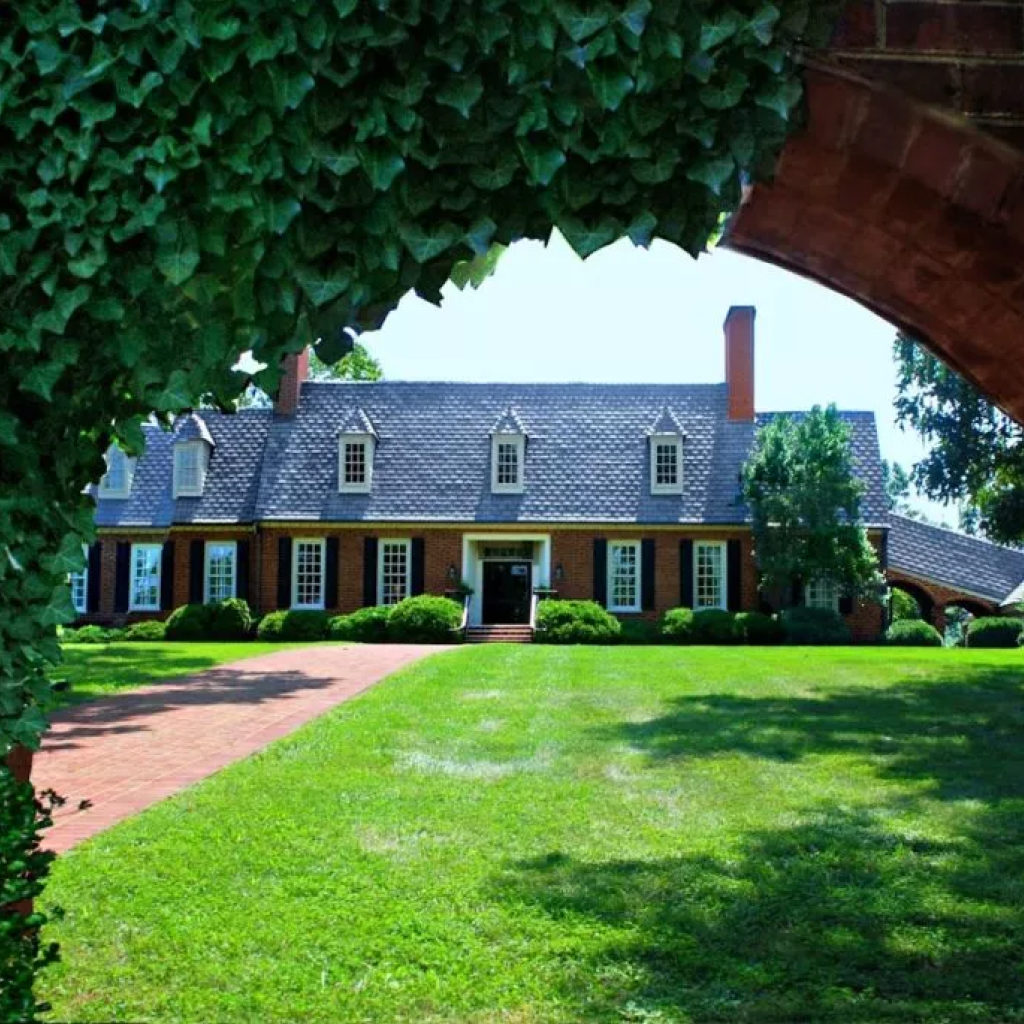
The Ins and Outs of Historic Home Renovation
There are standards to follow and historic home renovation restrictions to avoid when remodeling a historic home. Before you make any plans, it is best that you familiarize yourself with these 10 historic home renovation rules:
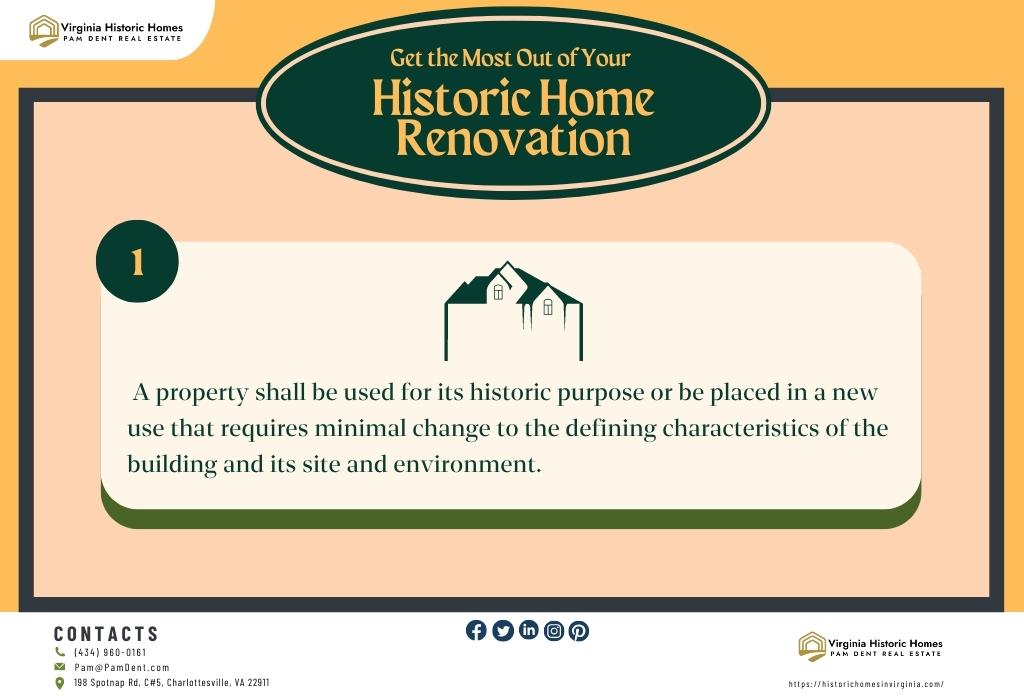
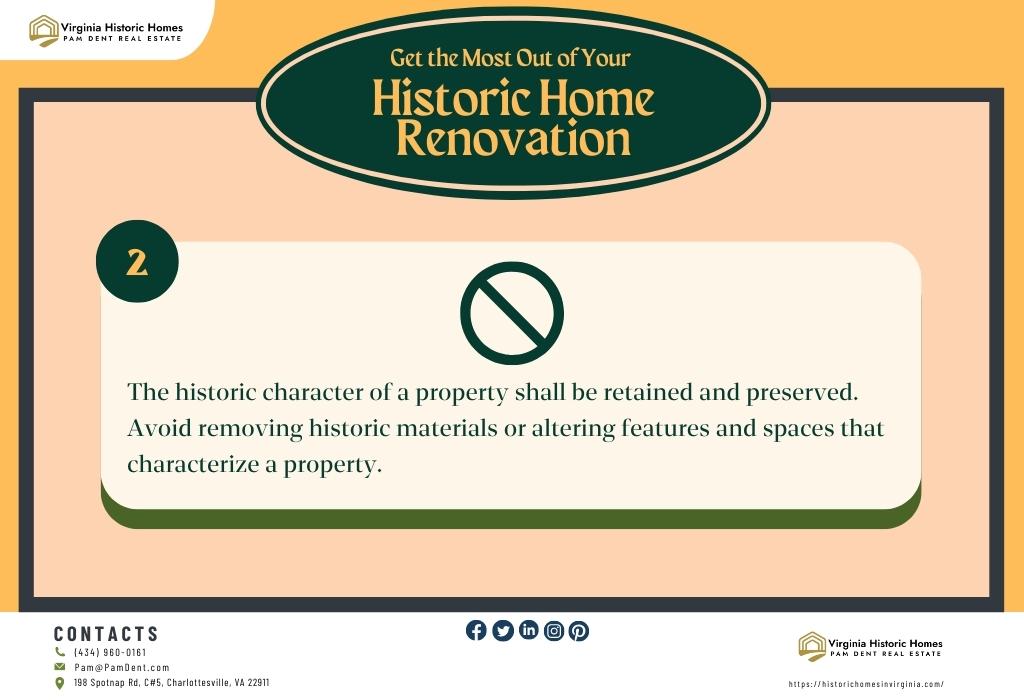
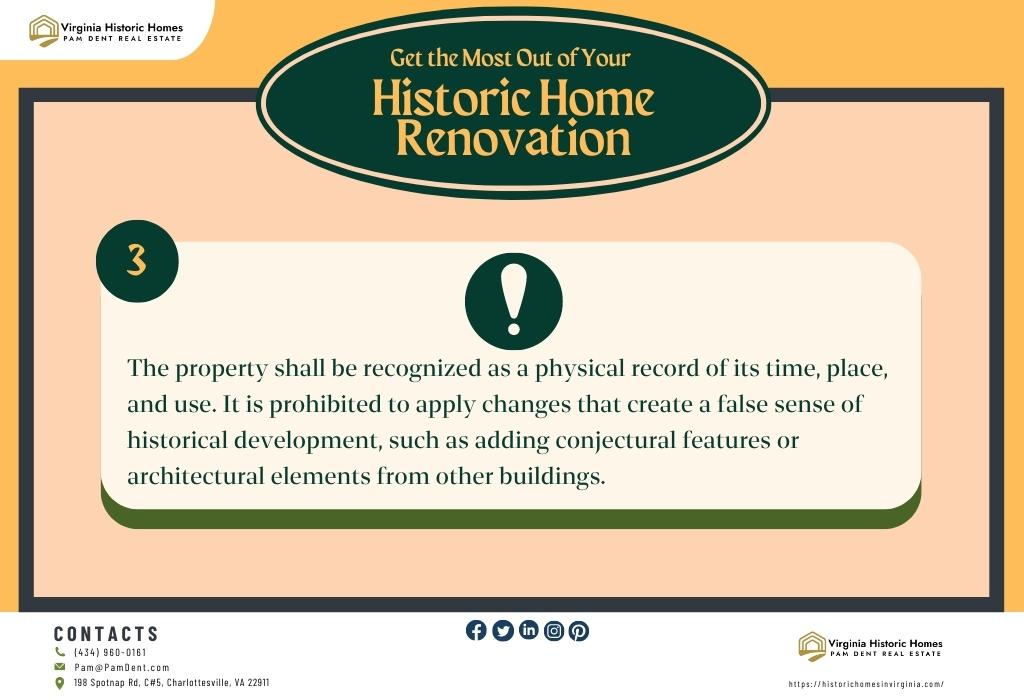
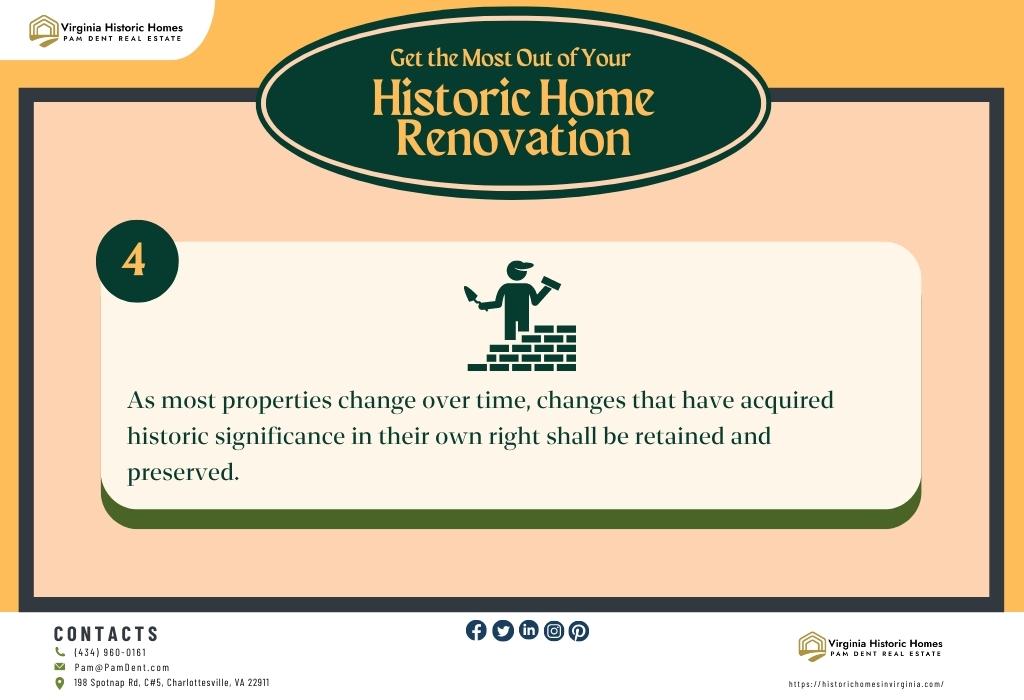
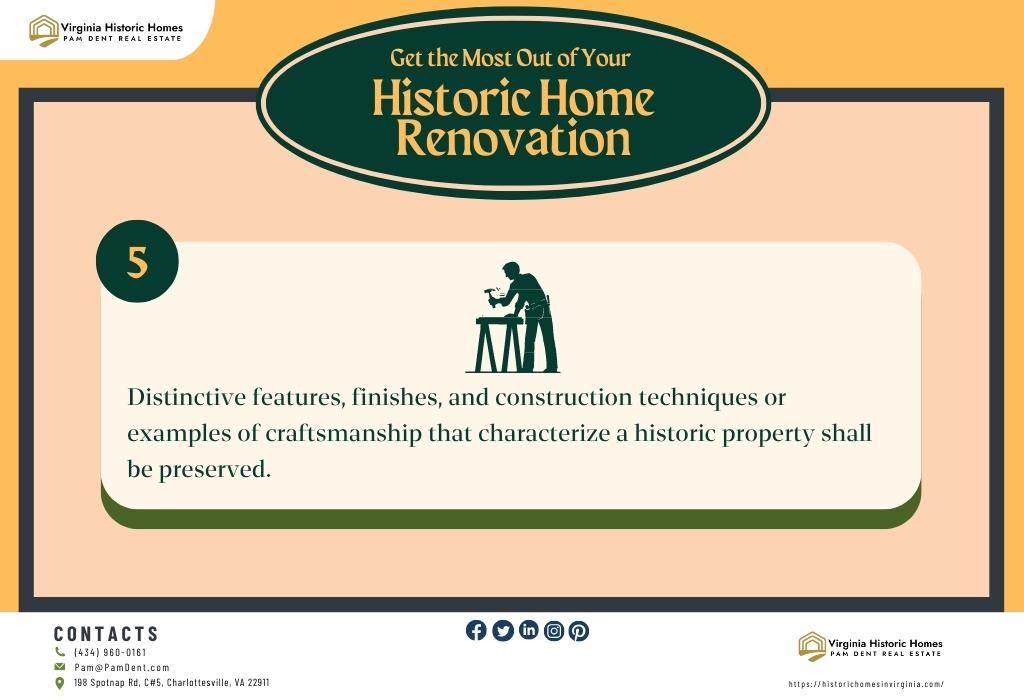
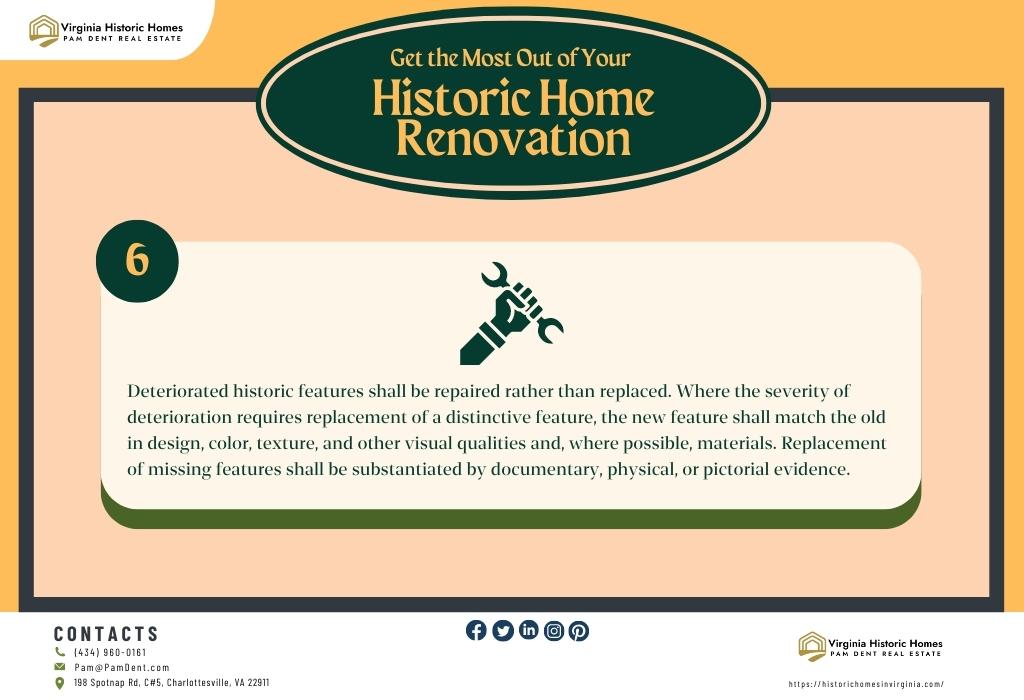
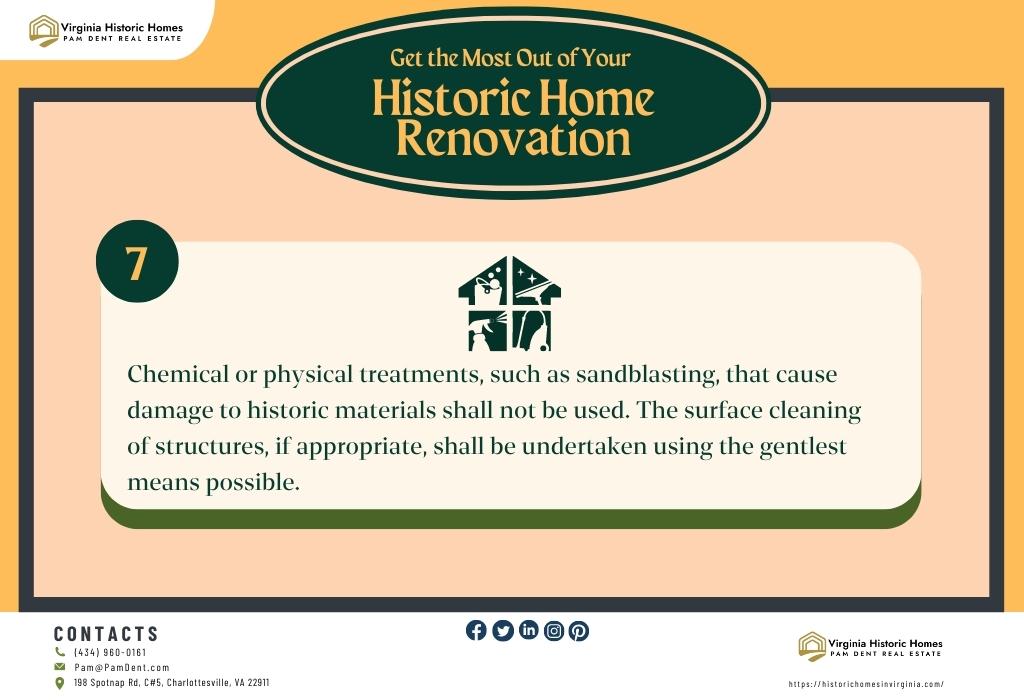

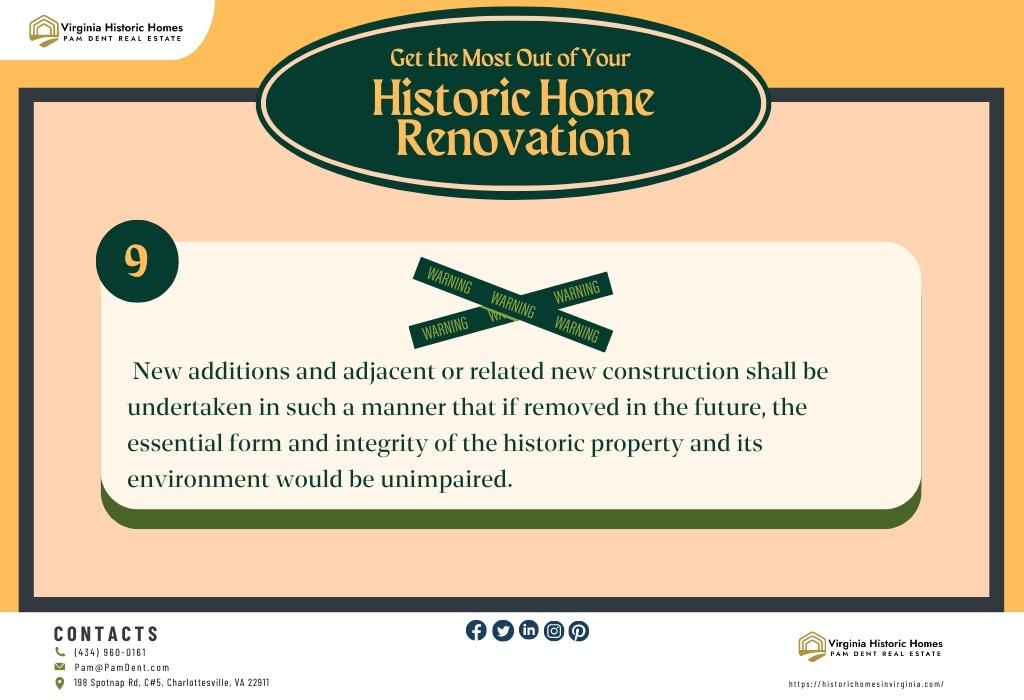
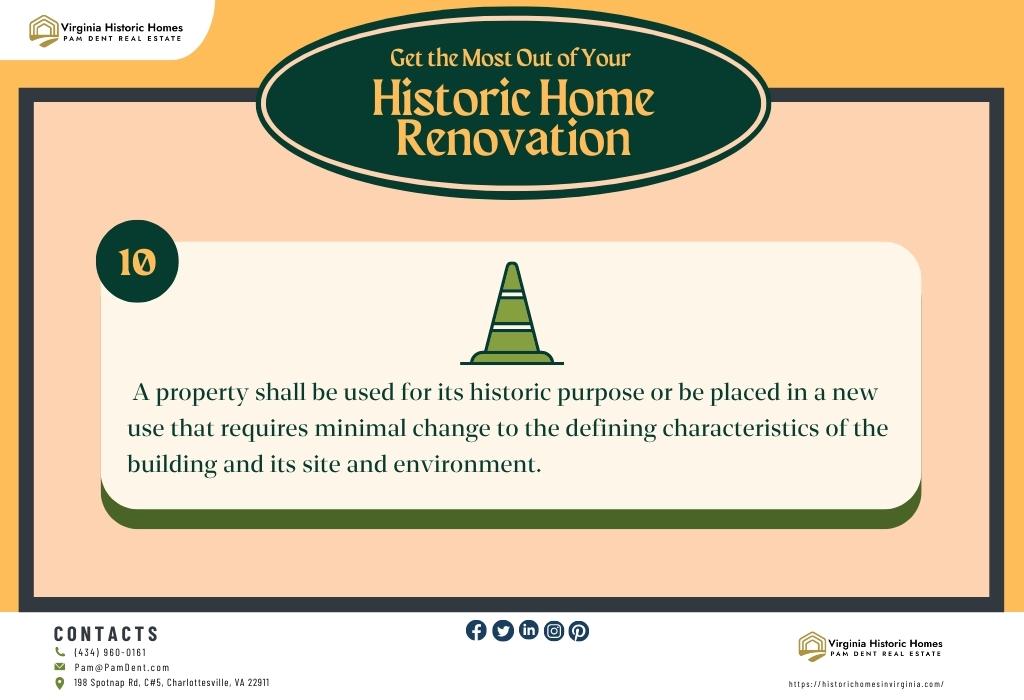
Frequently Asked Questions
What to consider before remodeling a historic home?
Several things must be considered before undertaking a modern renovation of a historic home, such as your home’s current condition, its history, and carpentry, as well as your household’s needs and your budget.
What to look for in a historic home remodel design?
Not everything needs to be saved. Consider replicating some parts during a historic home kitchen remodel or a historic home bathroom remodel to save on money.
What are the home remodeling and renovation trends?
Two of the popular trends are investing in a home office and enhancing outdoor spaces and features.
How can you get tax deductions for your heritage home?
You can complete a certified rehabilitation of a significant historic building to qualify for an income tax credit on 25% of your eligible expenses through the Virginia Rehabilitation Tax Credit Program and an additional 20% credit through the Federal Rehabilitation Tax Credit Program.
How to buy a historic home with renovation financing?
You can check out the historic home renovation loan options and grants for buying historic homes that are available for private property owners or buyers in your area.
How much does it cost to restore a historic home?
In general, the cost to renovate a historic home is about the same as building a new higher-end house. Broadly speaking, that’s around $475 per square foot.
What is the #1 thing you should do with your historic home remodel before moving in?
Check that everything is working.
Are there grants for restoring historic homes?
Yes, there are grants for restoring historic homes but these are usually available to non-profit organizations and public properties or groups. You may be able to find grants for historic homes on a local, state, or national level from various sources, like philanthropic groups.
How to get grants for historic homes?
You can contact the local government to determine what grants for renovating historic homes are available locally.
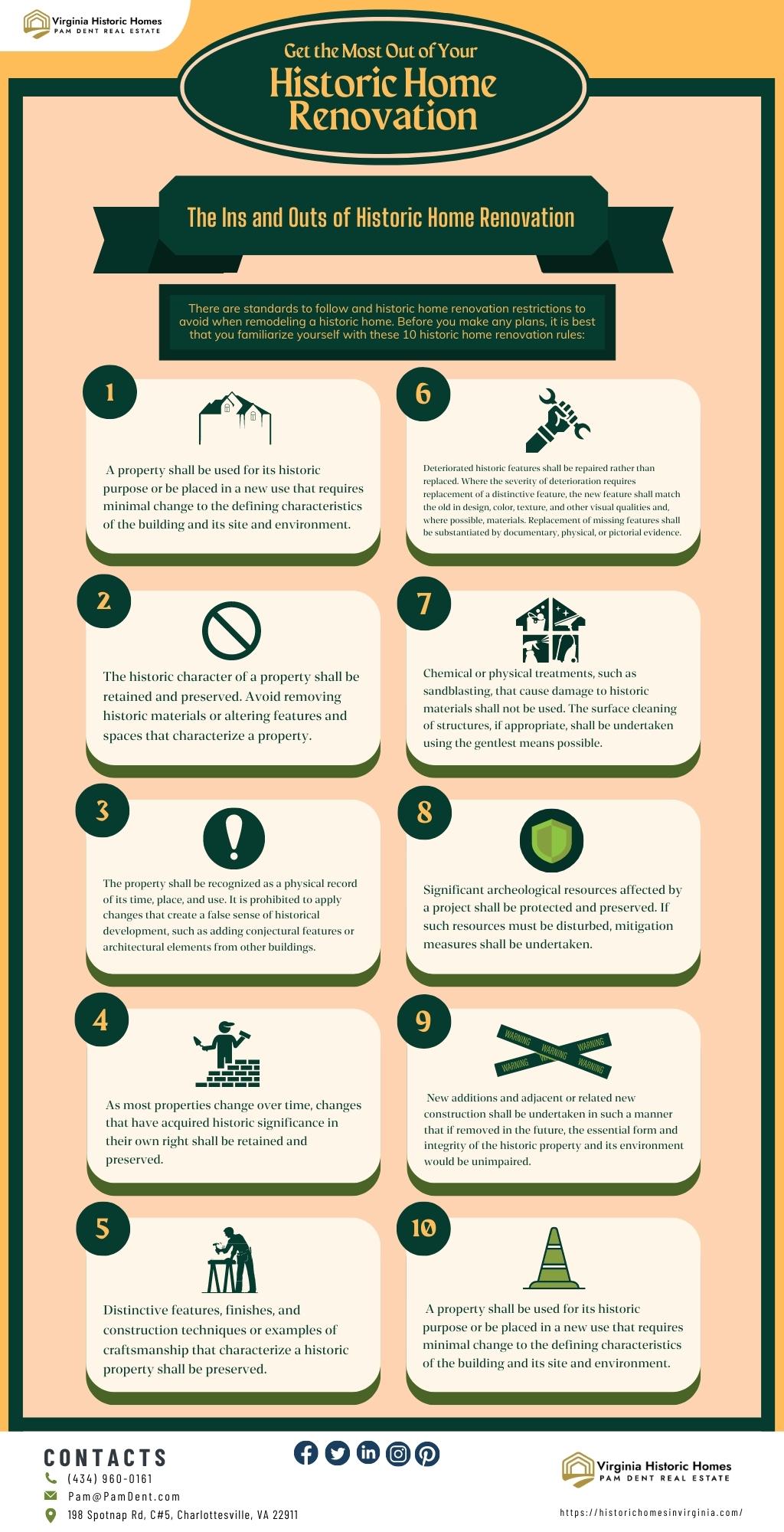
Final Thoughts
Historic homes in Virginia are simply astonishing and worth all the work and cost of renovating. I am particularly mesmerized by them, and I can show you all the wonderful options available to you in this location and help you find your dream home. I’m just a phone call or email away, contact me soon. Looking forward to our meeting!

